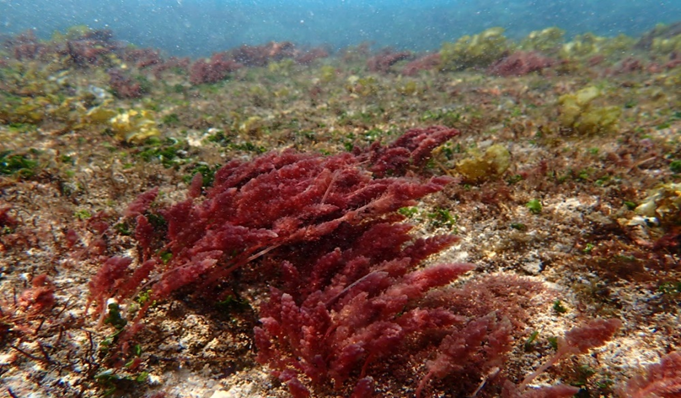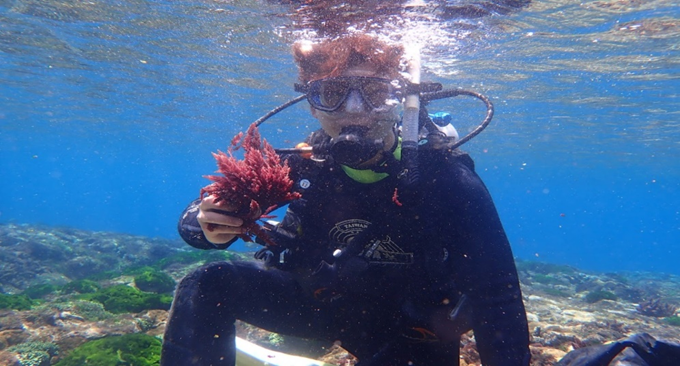The negative impact of climate change has become increasingly significant, and the climate issue has attracted international attention. A number of countries have proposed a “Net-zero Emissions by 2050” declaration and taken action. Taiwan has engaged in related research as well. The Donggang Biotechnology Research Center of the Fisheries Research Institute is actively developing artificial cultivation technology to produce the carbon-reducing seaweed Asparagopsis sp. It is expected that the low-carbon nature of seaweed farming and the effect of feeding it to cattle and sheep can reduce methane emissions and contribute to the net-zero emissions roadmap.
According to the Fisheries Research Institute, the frequency and intensity of extreme weather events, such as warm winters, scorching summers, prolonged droughts, and heavy rainfalls, have increased significantly in recent years. Greenhouse gases, such as carbon dioxide and methane, are considered to be the main cause of disasters. The greenhouse capacity of methane is dozens of times that of carbon dioxide and its half-life can be up to ten years. Additionally, the livestock industry, mainly cattle and sheep, is one of the main sources of methane emissions. Recently, it has been pointed out that adding 1% dry Asparagopsis sp to the feed of ruminants such as cattle and sheep can significantly reduce methane emissions caused by intestinal fermentation. This discovery has amazed the whole world. If methane emissions can be eliminated by adding Asparagopsis sp, the effect on global warming could be rapid and significant. Based on statistics, the number of cattle raised worldwide is over one billion, and the amount of seaweed needed is beyond what can be harvested in the wild. Therefore, countries have set up new organizations to invest in the Asparagopsis sp industry, with the hope of capturing carbon-reduction opportunities.
The Donggang Center of the Fisheries Research Institute has successfully established artificial cultivation techniques for a variety of macroalgae, including sarcodia suiae, caulerpa microphysa, agardhiella subulata, and ulva lactuca. In the past two years, in order to grasp the opportunity of carbon reduction, it has begun to actively invest in research related to Asparagopsis sp. Preliminary surveys have revealed that the distribution of Asparagopsis sp in the wild in Taiwan is quite fragmented, with populations found on the northeast coast, Penghu, Xiaoliuqiu, and the Hengchun Peninsula. However, it is not abundant, and there are obvious seasonal fluctuations. Researchers have collected seeds from the field. In addition to measuring the effective components that suppress methane emissions in Taiwan, researchers have actively conducted experiments on artificial cultivation to understand the effects of temperature, light, salinity, and nutrients on the growth of Asparagopsis sp in an artificial environment. Suitable aquaculture tanks will be designed in the future according to the natural ecological environment in the hope of establishing an artificial mass production model for Asparagopsis sp as soon as possible. Through the expansion of technology, farmers will be guided to build a brand-new seaweed industry chain, thus accelerating the goals of net-zero emissions and sustainability.
 Wild Asparagopsis sp population in the sea area around Taiwan
Wild Asparagopsis sp population in the sea area around Taiwan
 A researcher of the Fisheries Research Institute collecting wild Asparagopsis sp for cultivation and domestication
A researcher of the Fisheries Research Institute collecting wild Asparagopsis sp for cultivation and domestication